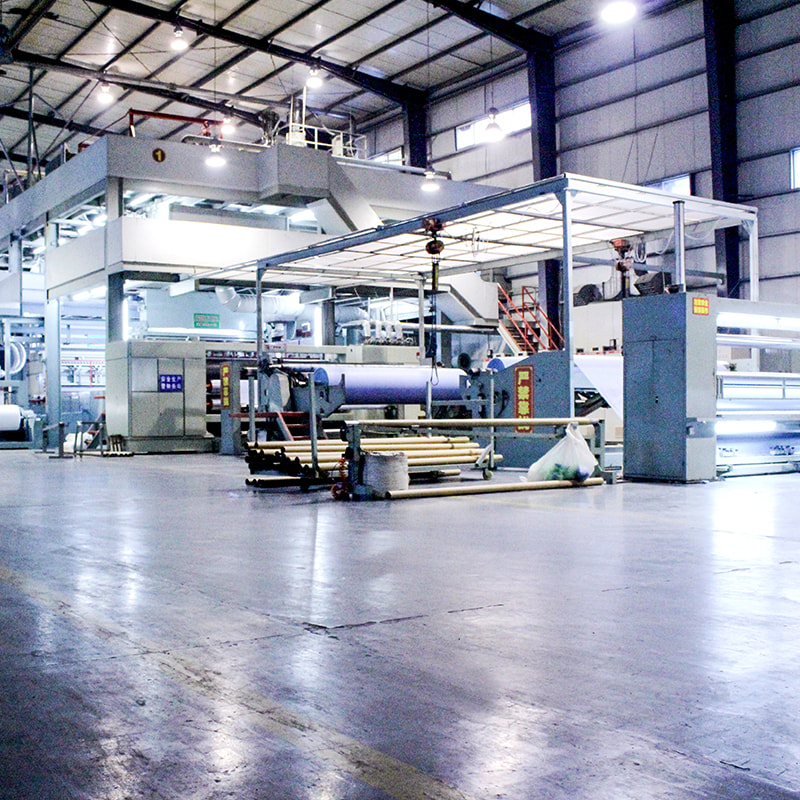Mastering Fabric Control: How Precision Shapes Spun-Melt Nonwoven Quality
The control over fabric properties such as porosity, tensile strength, and elasticity is one of the key factors that differentiate high-quality nonwoven fabrics from those of lesser quality. In the world of Spun-Melt nonwoven machines, where Spunbond and Meltblown technologies combine to produce versatile fabrics for a range of applications, the precision of fabric property control directly impacts product performance. Whether you are manufacturing face masks, diapers, agricultural covers, or medical textiles, achieving the right balance in fabric characteristics is not just a matter of design—it's an essential part of the production process that requires advanced technology and careful management.
One of the most critical factors in controlling fabric properties is the Spunbond and Meltblown processes, which are inherently different yet complementary in the SMS nonwoven machine setup. In the Spunbond section, the polypropylene filaments are extruded, stretched, and laid down onto a moving conveyor belt, creating a nonwoven fabric structure. The Meltblown section, on the other hand, produces finer fibers by blowing molten polymer through high-pressure air, creating a fabric that is denser and more uniform, with higher filtration properties. The ability to precisely control the parameters in both sections—such as filament denier, web tension, and temperature—plays a significant role in the final fabric's porosity (its ability to allow air or fluids to pass through), tensile strength (resistance to tearing or stretching), and elasticity (its ability to return to original form after being stretched).

The control over porosity is primarily influenced by the Meltblown process. By adjusting the airflow, polymer melt temperature, and extrusion rate, manufacturers can fine-tune the fiber diameter, which directly affects the fabric's pore size and structure. Smaller, finer fibers tend to produce a denser fabric with lower porosity, which is often required for high-performance medical applications like face masks or surgical gowns. In contrast, a more open structure may be desired for applications like agricultural covers or diapers, where breathability and moisture wicking are more critical. The precision of the Meltblown machine in controlling these factors allows for a wide range of fabric designs, ensuring that the correct balance of air permeability is achieved based on end-use requirements.
When it comes to tensile strength, the Spunbond section of the SMS machine plays a pivotal role. Here, the filaments are bonded together through a combination of heat, pressure, and mechanical stretching, which directly impacts the fabric's strength and durability. The exact amount of tension applied to the filaments, combined with the bonding process, determines how well the fabric will resist tearing or breaking under stress. High tensile strength is crucial in medical products like surgical drapes or hospital bed sheets, where fabric integrity under pressure is non-negotiable. The precision of the Spunbond process ensures that the correct amount of strength is built into the fabric, meeting the rigorous standards of industries that require high-performance materials.
Elasticity, the ability of the fabric to stretch and return to its original shape, is also highly influenced by the combination of Spunbond and Meltblown technologies. Elasticity is essential in products like diapers, feminine hygiene products, and certain medical fabrics, where comfort and fit are paramount. The amount of stretching applied during the Spunbond process, along with the integration of additives such as elastic filaments or elastomers, can significantly affect the fabric’s stretchability. With the right settings on the machine, producers can create a fabric that is not only soft and comfortable but also flexible enough to conform to varying shapes and movement. The Meltblown process further contributes to elasticity by enabling the production of finer fibers that improve the fabric’s pliability without compromising strength.
The precision of these processes isn’t purely about machine configuration, though. The raw materials used—specifically the polypropylene granules and their melt flow index (MFI)—also have a major impact on fabric characteristics. Machines designed for high efficiency typically require polypropylene with specific MFI values that ensure smooth processing and consistent output. By choosing the right granule grade and maintaining consistent quality control over the raw materials, manufacturers can maintain a high degree of precision in fabric properties. The melt flow index (MFI) for Spunbond is typically between 25-40, which ensures a proper balance of flowability and strength during fiber extrusion. For Meltblown, the MFI can range from 800 to 1600, giving it the necessary fluidity to create ultra-fine fibers with specific filtering capabilities.







 English
English 中文简体
中文简体 русский
русский عربى
عربى





